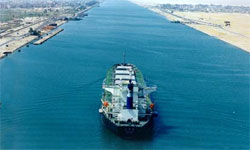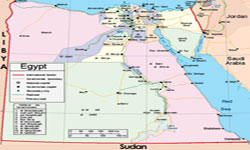Advantages of the Suez Canal and how it reshapes global shipping routes, saving time, fuel, and distance for world trade.
The Suez Canal is one of the most vital maritime passages in the world. Connecting the Mediterranean Sea to the Red Sea, it offers a direct shipping route between Europe and Asia without the need to navigate around Africa. Its strategic importance cannot be overstated — especially when looking at its numerous technical advantages and its massive influence on global trade logistics.
Advantages of the Canal
The Suez Canal, owned and operated by Egypt, brings a multitude of benefits to international shipping. These advantages go beyond simple geography — the canal is a marvel of maritime engineering and operational excellence.
1. Longest Lock-Free Canal in the World
One of the most significant structural advantages of the Suez Canal is that it’s the longest canal in the world without any locks. Unlike the Panama Canal, which uses a complex lock system to raise and lower ships, the Suez allows uninterrupted navigation. This design eliminates delays and energy consumption related to elevation changes.
2. Exceptionally Low Accident Rates
Compared to other major waterways, the Suez Canal boasts a remarkably low percentage of maritime accidents. Its wide navigation channels, clear traffic rules, and support systems contribute to its stellar safety record. With these systems in place, the canal offers reliable, round-the-clock navigation for cargo ships, tankers, and bulk carriers.
3. 24/7 Navigation Availability
Unlike some waterways that are constrained by tides, locks, or daylight, the Suez Canal supports navigation both day and night. This continuous operation allows for better scheduling, reduced waiting times, and faster global shipping cycles.
4. Flexible for Future Expansion
The Suez Canal Authority has strategically designed the canal to be easily widened and deepened to meet future shipping demands. As global trade increases and vessels grow in size, the canal can be adapted without major reengineering — a clear competitive advantage.
5. Advanced Vessel Traffic Management System (VTMS)
To further enhance safety and efficiency, the Suez Canal features a cutting-edge Vessel Traffic Management System (VTMS). This system includes real-time radar tracking, electronic chart displays, and precise ship positioning. VTMS ensures organized traffic flow, avoids collisions, and monitors environmental factors.
6. Accommodation of the Largest Tankers
Thanks to regular upgrades, the Suez Canal is now capable of accommodating the world’s largest tankers — particularly during their ballast (empty) trips. This includes ultra-large crude carriers (ULCCs) and very large crude carriers (VLCCs), reducing the need for rerouting or transshipment.
Influence of the Suez Canal on World Trade
The importance of the Suez Canal in global commerce is profound. It dramatically cuts transit distances between major trade centers, helping to save billions of dollars annually in fuel costs, labor, and time.
1. Massive Reduction in Shipping Distances
Let’s take a closer look at some real-world comparisons:
- Jeddah (Saudi Arabia) to Port of Constanza (Black Sea)
- Via Cape of Good Hope: 11,771 miles
- Via Suez Canal: 1,698 miles
- Distance saved: 86%
- Rotterdam (Netherlands) to Tokyo (Japan)
- Via Cape of Good Hope: Much longer route
- Via Suez Canal: Saves 23% of total distance
These savings not only reduce costs but also lower greenhouse gas emissions and improve delivery times.
2. Gateway for 7% of Global Seaborne Trade
Around 7% of all sea-transported global trade passes through the Suez Canal. This makes it a central hub for the movement of goods like oil, liquefied natural gas (LNG), machinery, and consumer goods.
3. Strategic Trade Distribution
Of the traffic through the Suez Canal:
- 35% is between Red Sea and Arabian Gulf ports
- 20% is between Indian and Southeast Asian ports
- 39% links to Far East destinations
This shows how the Suez Canal serves as a critical connector between the East and West, making it indispensable to international commerce.

Frequently Asked Questions
1. What makes the Suez Canal unique compared to the Panama Canal?
The Suez Canal is lock-free, allowing uninterrupted ship passage, whereas the Panama Canal uses a lock system requiring elevation adjustments.
2. Why is the Suez Canal important for global trade?
It offers the shortest sea link between Europe and Asia, cutting thousands of miles off traditional routes and saving time, fuel, and costs.
3. How much trade passes through the Suez Canal?
Approximately 7% of global seaborne trade flows through the Suez Canal annually.
4. Can the Suez Canal handle modern mega ships?
Yes. With regular deepening and widening, the canal now accommodates most large tankers, especially during ballast trips.
5. What safety measures exist in the Suez Canal?
The VTMS (Vessel Traffic Management System) provides radar surveillance, real-time data, and navigational assistance to ensure safe passage.
6. Is the Suez Canal open year-round?
Yes, it operates 24/7, 365 days a year, regardless of weather conditions or tides.
The Suez Canal stands as a beacon of innovation, efficiency, and connectivity in the maritime world. With its lock-free structure, cutting-edge management systems, and ability to adapt to the future of shipping, it not only shortens distances but also strengthens the entire global trade infrastructure. As world commerce continues to expand, the Suez Canal will remain a critical pillar supporting economic growth and sustainability.









